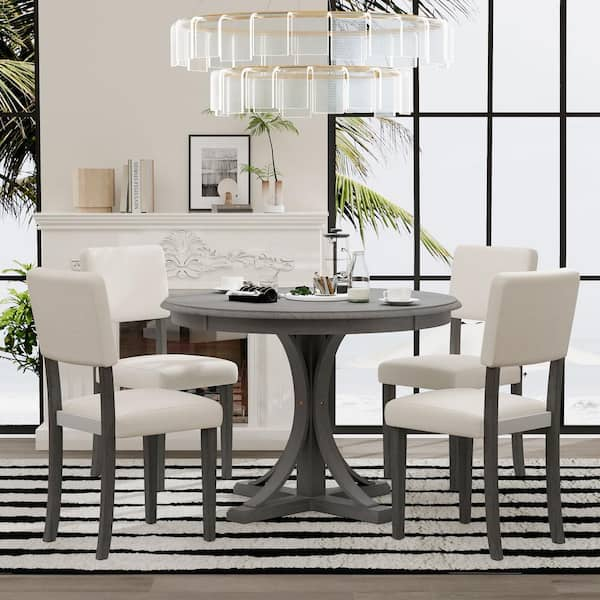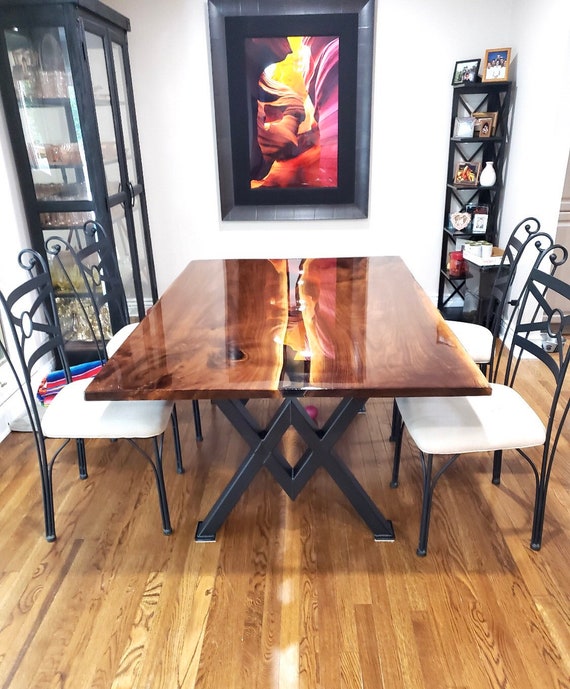How Dining Room Table Legs Can Change the Entire Aesthetic of Your Room
How Dining Room Table Legs Can Change the Entire Aesthetic of Your Room
Blog Article
From Standard to Modern: Locate the Suitable Dining Room Table Legs for Your Design
The selection of eating area table legs plays an essential function in defining the general character of your space, bridging the gap between conventional workmanship and contemporary aesthetic appeals. While timeless designs such as cabriole and transformed legs stimulate a feeling of ageless sophistication, contemporary designs like barrette and geometric choices offer a possibility for striking aesthetic rate of interest. Evaluating the best equilibrium between these designs needs a nuanced understanding of your existing decoration and individual taste. As you think about these aspects, the concern stays: just how can you effortlessly integrate these varied leg designs to develop an unified dining experience?
Recognizing Table Leg Styles
The selection of dining-room table leg designs can dramatically influence both the looks and capability of the area. Each leg design adds distinct useful features and visual components, catering to varied layout choices and use needs. Recognizing these styles is important for choosing the best table that aligns with your total interior style vision.
As an example, tapered legs use a tidy, traditional look that can enhance an area's elegance, while stand bases provide security and maximize legroom, making them perfect for smaller spaces. Hairpin legs, a trademark of mid-century modern-day design, introduce a commercial flair, enabling a ventilated, open feeling. Trestle legs evoke rustic charm, providing robust assistance and a sense of timelessness.
Wood legs can bring warmth and appearance, whereas steel options typically convey a smooth, contemporary vibe. Inevitably, understanding table leg styles is vital for creating a natural eating area that reflects personal design while ensuring functionality and comfort.
Standard Table Leg Options
When picking eating room table legs, typical options frequently embody classic style and workmanship. These designs show an abundant heritage and a dedication to quality, making them perfect for those who value timeless looks.
Among one of the most renowned traditional leg designs is the cabriole leg, characterized by its graceful bent shape. This layout often includes decorative makings and is most commonly found in Queen Anne and Chippendale furnishings. Another popular choice is the turned leg, which flaunts a collection of smooth, rounded shapes that provide a traditional look while keeping security.
Furthermore, the straight leg, while easy, supplies a durable and basic framework that can blend flawlessly with a variety of tabletop designs. For those attracted to ornate outlining, claw-and-ball feet legs evoke a feeling of grandeur and can act as a sensational prime focus in any kind of dining area.
Last but not least, stand bases, although not purely legs, supply a different standard alternative that allows for sufficient legroom and can be beautifully carved. Each of these standard leg styles adds to the total ambiance of a dining-room, weding feature with visual allure.

Modern Table Leg Styles
Modern table leg layouts offer a diverse variety of designs that stress clean lines and innovative products. These styles often prioritize capability while working as striking prime focus within an eating area. Minimalist aesthetic appeals are widespread, with legs crafted from products such as metal, glass, and engineered wood, which add see here to a ventilated and modern feeling.
One popular layout is the hairpin leg, identified by its slender, conical framework that supplies security without frustrating the tabletop (dining room table legs). This style is usually discovered in mid-century contemporary furnishings and can effortlessly match various table forms. Another fad is making use of geometric forms, where legs may tackle angular or unbalanced types, including visual passion and a touch of creativity

Mixing Designs for Unique Spaces
Frequently, home owners seek to develop special eating areas that mirror their personal style by blending different layout components. This method enables the consolidation of varied looks, resulting in an unified yet distinctive environment. Coupling a rustic wood table with smooth, modern metal legs can create an eye-catching comparison that boosts the space's overall charm.
Additionally, integrating vintage table legs with modern tabletops can stimulate a feeling of history while keeping a contemporary sensibility. Such combinations not only showcase individual preference but likewise motivate creative thinking, allowing property owners to curate a room that feels both personal and inviting.
Shade plays a vital role in this mixing procedure; choosing table legs that match or comparison with the existing shade plan can improve visual rate you can try here of interest. Whitewashed legs can soften the daring of a dark table surface, producing a balanced visual.
Tips for Selecting the Right Legs
Choosing the right table legs is necessary for achieving both performance and visual charm in your dining room. Begin by considering the general style of your space. Typical settings gain from legs that feature complex makings or transformed designs, while contemporary spaces might call for sleek, minimal designs.
Following, analyze the height and stability of the legs. dining room table legs. Common table range between 28 to 30 inches in elevation, so make sure the legs complement this measurement for convenience. Additionally, robust materials, such as wood or metal, can enhance security and long life
Assess the leg shape too-- options consist of directly, tapered, or stand layouts. Straight legs supply a classic look, while tapered legs can add a touch of sophistication. Pedestal bases offer enough legroom and are excellent for smaller rooms.
Final Thought
In recap, choosing the optimal dining area table legs calls for mindful consideration of both modern and standard designs. By balancing leg style, elevation, and material with the overall décor, a cohesive and welcoming ambience can be accomplished.
The variety of dining area table leg styles can dramatically affect both the aesthetic appeals and capability of the area. Eventually, comprehending table leg styles is important for developing a cohesive dining location that shows personal design while ensuring usefulness and convenience.One of the most legendary conventional leg designs is the cabriole leg, defined by its elegant rounded shape. Straight legs supply a timeless appearance, while tapered legs can include a touch of elegance.In recap, choosing the perfect dining area table legs needs my sources mindful factor to consider of both traditional and modern-day styles.
Report this page